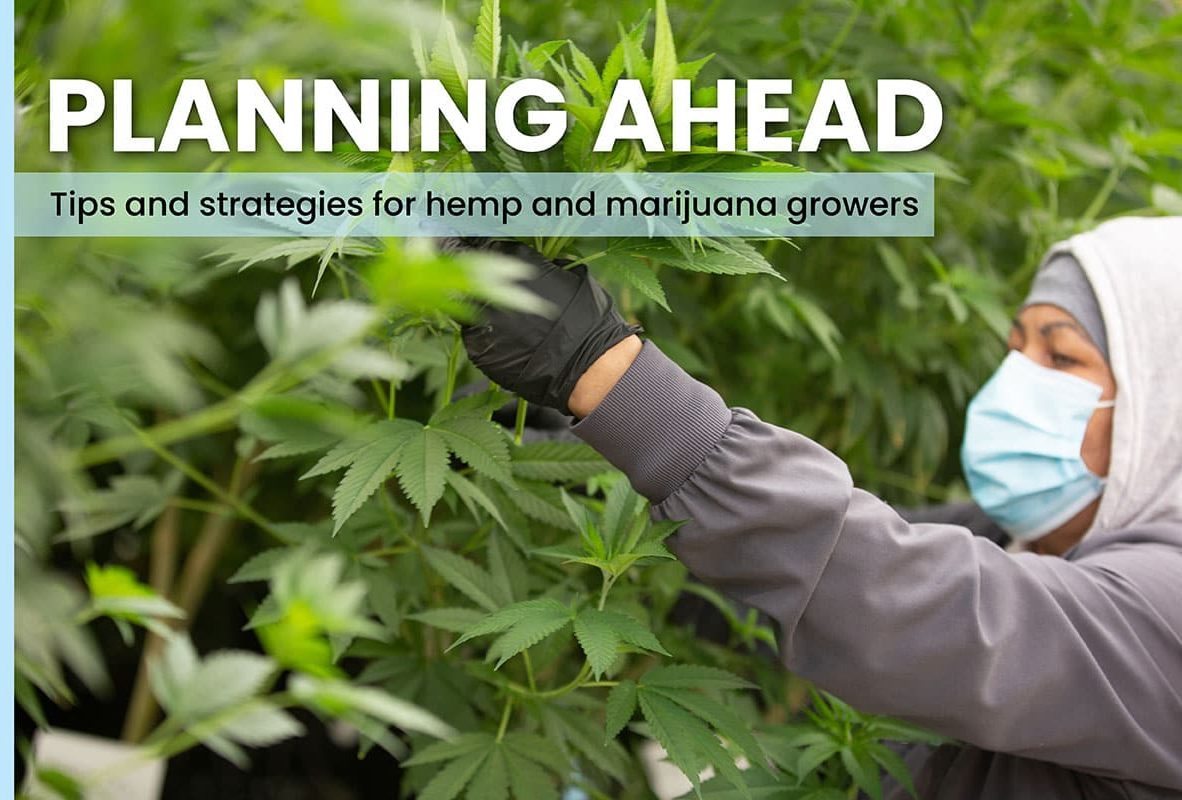(This is the third installment in a series focused on cultivation planning for marijuana and hemp growers. The previous installment is available here.)
Outdoor cannabis producers often have a brief window to get their seedlings and clones transplanted during planting season.
Here are a few tips for marijuana and hemp cultivators who are sourcing young plants to consider:
- Communicating with the providers of young plants to ensure timely delivery.
- Setting up a staging area near the field where they will be planted, so the plants can acclimate to the environment.
- Harden off plants to acclimate them to outdoor conditions.
Make a receiving plan
Before delivery, growers should communicate their needs and planting schedules with their young-plants providers to set up a receiving schedule, especially if they plan to transplant several acres worth of crops, said Hamilton Nelson, sales and operations manager with Square One Starts in Aurora, Oregon.
This will help growers stagger the delivery of their young plants to avoid having seedlings or clones wait for several days to be planted, which can stress the plants, Nelson said.
“Work with your supplier on what your delivery dates are and make sure that your vendor implements and equipment suppliers are on track, and you’re not just setting this up in January and not talking to them and then expecting your plants to show up on June 1 – that’s a mistake,” he said.
Nelson suggests growers give themselves a grace period on the first day, planting fewer acres to allow time to calibrate machinery and get a planting rhythm down.
“Most of the time, the first day of transplanting out can be a little tougher because you’re adjusting and setting up your transplanter, so … at least on that first day, (growers) should not plan on doing that entire acreage.”
Growers are likely to run into delays and young-plant suppliers often will agree to hold delivery for a few days, Nelson said, but growers need to communicate.
“Most suppliers are going to be willing to hold it,” he said. “But (they) will charge a surcharge for delay because you are at that point taking up square footage that could be used for something else, and … that reduces our revenue.”
Staging space for arrival
Having the right place to stage plants upon receipt is critical to success, said Josh Schneider, CEO of young-plants provider Cultivaris Hemp in San Diego.
“I have seen many instances where farmers were not prepared to receive plants, and the lack of preparation caused them to lose or seriously damage up to 75% of the plants they received,” Schneider said.
Calculate the necessary square footage: Most commercial plant trays will occupy around 1.7 square feet, Schneider said.
The staging area should be a shaded, level area, ideally with gravel or concrete as a base, with access to water and a professional-quality breaker to ensure young plants can be watered thoroughly, Schneider said.
“Make sure to double-check the corners and edges – most young plants need to be watered several times a day, and water stress prior to planting can cause premature flowering or hermaphrodites,” he said.
Of course, a shaded structure such as a hoop house would be ideal, Nelson said. But in a pinch, farmers can build a temporary enclosure out of materials such as hay or straw bales, with shade cloth over top.
“Eventually they’re going to be in the field with nothing over them, but at the same point, you don’t want to damage them or stress them out as soon as they hit your farm,” he said.
Protect young plants from livestock and wild animals with an enclosure or fence, Schneider said.
“Many a farmer has gone to bed with a lot of nice-looking plants and come back the next day to find the rabbits went to town and all that is left is useless plant nubs,” he said.
Hardening off
Ideally, the young-plant supplier will have taken the extra step to acclimate seedlings or clones that have been produced in an indoor environment to the outdoors, so they’re ready to drop in the ground soon after delivery, said Jeremy Klettke, founder and CEO of Davis Farms of Oregon, a hemp farm and genetics provider in Bend.
“Provided you receive your live inputs from a trusted and reliable source, they should be field-hardened and not need much more than basic care, such as watering and protection from any extreme weather until they go into the field,” Klettke said.
If this hasn’t occurred, growers can harden off their seedlings and clones over a couple of days by gradually exposing their plants to the climate, he said.
This process is important because it adapts plants from a controlled high-humidity indoor environment to the fully exposed outdoors, so they can get used to the elements they will experience outdoors, such as direct sun, wind, rain, cool nights and less frequent watering.
Ideally, farmers will have a hoop house or structure with roll-up sides for this process, Klettke said.
“We generally will start them out by rolling up the sides for an hour, once the temp starts to come up in the day – so like 11 a.m. or noon – and then rolling them back down to keep picking them up, and then rolling them up again,” Klettke said.
“So it’s a series of limited exposures over a couple of days to get the plants prepared for the environment.”
Within 15 minutes of exposure, growers should look for shock – wilting or flagging on the leaves – as the indicator that they need to roll the sides back down and let them sit in the protected environment and humidity to recover.
“You’ll be amazed – it takes one or two days of maybe two to three cycles a day, and the plants are fully adapted from where they were to where they’re going,” Klettke said.
Another variable in the hardening off process is the photoperiod or light intensity of the sun versus artificial or supplemental light in the protected environment.
Growers can use a similar strategy with a shade cloth – pulling it off for increments of time and watching for the shock reaction, Klettke said.
“Don’t do it in the middle of the day … ” he said. “Run the shade cloth while the sun’s out at its peak, and then go ahead and start pulling it off in afternoons and mornings because obviously the artificial light is like 10% of the intensity of the sun.”
Laura Drotleff can be reached at laura.drotleff@hempindustrydaily.com.






